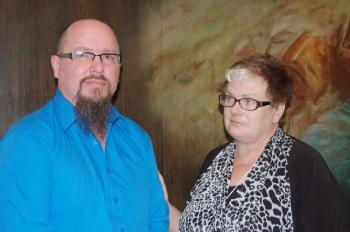Image Caption
By Shari Narine
Windspeaker Contributor
EDMONTON
Brad Cunningham applauds Alberta’s comprehensive sexual violence action plan released May 11 as “our new path as we walk together in the future.”
Cunningham, a director with the Association of Alberta Sexual Assault Services, knows how important such a path is.
Four years ago, Cunningham’s cousin committed suicide. Cunningham’s cousin was one of five men sexually abused as children by their uncle. Cunningham is also among those five.
“We lost someone who was very important to us. That’s why we do this work today. To do this for him,” said Cunningham.
Cunningham was 11 years old in 1983 living in the Peavine Métis Settlement when this happened. But he didn’t say anything. Then about 10 years ago his brother told him that he, too, had been sexually assaulted. It turned out to be the same uncle. They discovered three cousins had also been abused.
Deciding to speak out against the violence, they went to the RCMP. The uncle was charged, found guilty and sentenced to 23 months of house arrest, but allowed to go to work.
“Speaking out against sexual violence can be very hard. It is hard on the victim. It is hard on the victim’s family and it is very hard on the community,” said Cunningham.
“Going through the court system was very hard on us as we had to share our dark past with people we did not know,” he said.
But telling his story on Thursday as the Association of Alberta Sexual Assault Services and the province rolled out the new plan was “simple,” said Cunnigham.
“It’s about the babies. What are we doing today to help protect our babies from the violence,” he said.
Cunningham believes many of those answers can be found in the sexual violence action plan, which was the result of extensive public consultations throughout the province.
The plan presents a four-part approach: enhanced intervention, effective prevention strategies, strong leadership and accountability, and effective outreach strategies.

